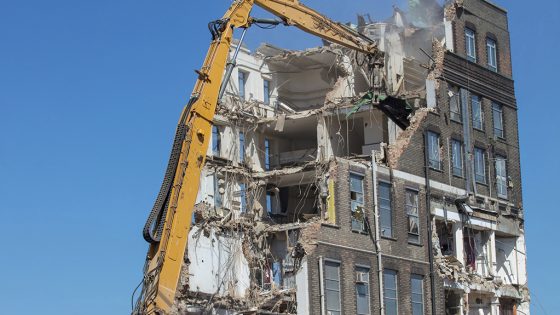The government has been warned that its plan to ditch the lower level of landfill tax for less-polluting materials risks hitting construction and demolition firms with an unsustainable increase in disposal costs.
Treasury proposals to reform landfill tax would see the lower rate of £4.05 per tonne gradually increase until it catches up in 2030 with the standard rate, which stands at £126.15.
At the moment, the lower rate applies to inert, less-polluting materials such as small particles of crushed stone, sand or gravel (known as fines), which, the government says, have the potential to be recycled and reused, thereby reducing reliance on scarce natural resources.
The plans would also end the qualifying fines regime, under which materials meeting certain criteria are eligible for the lower level of tax.
Since the regime was introduced a decade ago, it has been beset by practical difficulties, as well as concerns that standard-rated fines are being deliberately mixed with inert materials to conceal their true composition.
But worries have been raised about the impact of the proposed reforms on construction and demolition firms that rely on the lower rate for the disposal of development and demolition waste, as well as on waste disposal more broadly, given the lack of viable alternatives.
“Even for waste that is not sent to landfill, there will be consequential price increases because landfill tax effectively acts as a stimulus that sets market pricing for waste disposal,” said Jayne Harrold, tax partner at professional services group S&W.
“This will increase the cost of developing new houses and commercial property, with consequential price increases.”
Harrold said the purpose of the changes was to incentivise the reuse and recovery of more material and reduce the amount of fraud that currently takes place.
“Undoubtedly, the additional price signal will mean that treatment processes that are not economically viable will become viable, but there are other challenges to the reuse and recycling of material connected with regulatory restrictions that need to be addressed for the shift to take place,” she said.
“Otherwise, there is no alternative behaviour to adopt and this simply becomes a 3,000 per cent tax hike, and this is likely to drive increased illegal disposal and fly-tipping.”
She said any changes would need to be phased in over an extended period and coupled with regulatory changes to address the current barriers to recycling and reuse – and to allow the industry to adapt.
In the consultation, the government accepts that the changes could lead to cost increases for firms, but it argues that the removal of the lower rate would accelerate the development of alternatives to landfill.
“Businesses that currently dispose of lower-rated waste to landfill may experience increased disposal costs,” it says.
“The scale of this impact will depend on availability and use of alternatives to landfill, which are expected to develop in response to the strong price signal provided by the transition to a single rate of landfill tax.”
The government adds that it would welcome evidence from the construction and demolition sectors on current practice and the potential impact of the proposals.
Adrian Corrigan, president of the National Federation of Demolition Contractors, said the trade body would be actively encouraging its members to ensure their voices are heard.
“We recognise the critical role that landfill tax plays in influencing waste-disposal behaviours and supporting environmental goals,” he told Construction News.
“It is essential that any reform ensures fair implementation while encouraging further innovation and sustainable practices within the construction and demolition industry.”
The consultation closes on 21 July.

